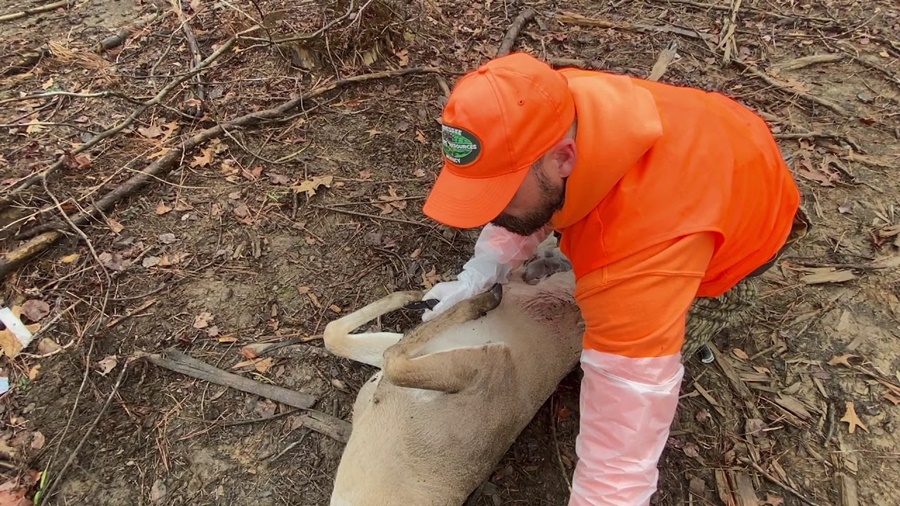Field dressing is one of the most important skills every hunter must master. Properly cleaning and handling game in the field not only preserves the quality of the meat but also ensures safety and hygiene. Whether you’re processing a deer, rabbit, or bird, the fundamentals remain the same: act quickly, stay clean, and keep the meat cool. This guide covers the essential steps and principles of field dressing and handling game from the moment of harvest to storage or transport.
1. Preparing for the Task
Before heading into the field, ensure you have the right tools and mindset. Preparation makes the process cleaner, faster, and safer.
Essential tools include:
A sharp hunting or skinning knife
Disposable gloves
Game bags or clean cloth sacks
Rope or paracord (for hanging or securing)
Clean water or wipes for washing hands and tools
A small bone saw (for large game)
Always remember: sharp blades are safer than dull ones, as they require less pressure and offer more control.
2. Safety First
Field dressing involves working with sharp tools and potentially slippery conditions. Follow these safety guidelines:
Make sure your firearm or bow is unloaded and set aside before starting.
Wear gloves to reduce contact with blood and possible disease organisms.
Work slowly and deliberately avoid cutting toward yourself.
If you are alone, let someone know your location and expected return time.
3. Field Dressing Basics
The goal of field dressing is to remove the internal organs quickly and cleanly to allow the body cavity to cool, which prevents bacterial growth and spoilage.
Step-by-Step Process:
1. Position the Animal:
Lay the animal on its back with the head slightly uphill if possible. This helps prevent fluids from spilling into the body cavity.
2. Make the Initial Cut:
Starting just below the breastbone, make a shallow incision down to the pelvic bone. Be careful not to puncture the stomach or intestines.
3. Open the Body Cavity:
Use two fingers to lift the skin and muscle away from the organs as you cut. This technique helps avoid contamination.
4. Remove the Organs:
Cut the diaphragm to access the chest cavity and sever the windpipe and esophagus. Gently pull out all internal organs in one motion, cutting connective tissue as needed.
5. Drain and Clean:
Allow blood to drain and wipe or rinse the cavity with clean water if available. Prop the cavity open to promote cooling.
4. Handling and Transporting Game
Proper handling after field dressing is crucial for maintaining meat quality.
Keep it Cool:
Heat is the enemy of fresh game meat. In warm weather, move the carcass to shade or hang it where air can circulate. In cold weather, avoid freezing the surface too quickly.
Avoid Contamination:
Keep the carcass off the ground when possible. Use clean game bags to protect it from dirt, insects, and debris.
Transport Promptly:
Get the meat to a cooler or processing area as soon as possible. For large animals, you may need to quarter them in the field to make transport easier.
5. Skinning and Butchering
Once the carcass is cooled, you can proceed to skinning and butchering. For most hunters, this is best done at camp or home where you have better lighting, tools, and clean surfaces.
When skinning, use long, smooth strokes and work carefully around joints and muscle seams to preserve meat. Avoid cutting through hair or fur whenever possible.
6. Hygiene and Disease Precautions
Field dressing can expose you to bacteria or parasites. Follow these hygiene practices:
Wash hands, knives, and equipment with soap and hot water as soon as possible.
Avoid contact with brain, spinal tissue, or lymph nodes in areas where Chronic Wasting Disease (CWD) is a concern.
Dispose of entrails properly, following local regulations.
7. Respect for the Animal and the Land
Responsible hunters treat their harvest and the environment with respect. Always follow local laws regarding waste disposal and carcass transport. Leave the area clean and undisturbed, honoring both the animal and nature.
Conclusion
Field dressing and handling game properly ensures that your hard-earned harvest turns into clean, flavorful meat. With the right tools, preparation, and attention to detail, you can maintain the quality of your game from field to table. Practice, patience, and respect for the process will make you a more skilled and ethical hunter and guarantee that nothing goes to waste.


